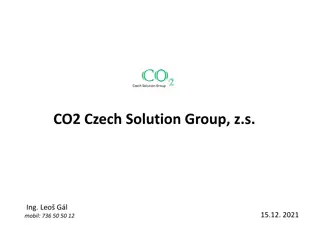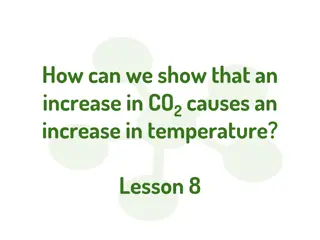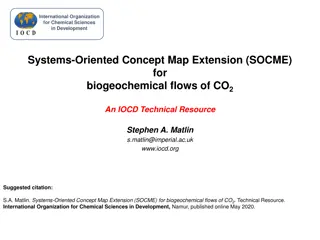Insights from CO2 Measurement in Classroom Ventilation
Understand the significance of CO2 measurements in classroom ventilation for better indoor air quality and reduced infection risks. Explore the use of CO2 sensors, data analysis, and proxy models to improve ventilation systems in schools. Discover findings on airborne infection risk and variations within school environments, shedding light on the impact of ventilation on secondary infections.
Download Presentation

Please find below an Image/Link to download the presentation.
The content on the website is provided AS IS for your information and personal use only. It may not be sold, licensed, or shared on other websites without obtaining consent from the author.If you encounter any issues during the download, it is possible that the publisher has removed the file from their server.
You are allowed to download the files provided on this website for personal or commercial use, subject to the condition that they are used lawfully. All files are the property of their respective owners.
The content on the website is provided AS IS for your information and personal use only. It may not be sold, licensed, or shared on other websites without obtaining consent from the author.
E N D
Presentation Transcript
What can we learn from one CO2 measurement in a classroom? Carolanne Vouriot TAPAS Networking Event: Engaging with Industry 9thMarch 2023
Ventilation in schools 11 million pupils and staff in UK schools Spending 30% of their time in schools Key location for indoor air quality and infection risk What is the ventilation provision in UK schools? From past measurement campaigns there is an issue in UK and European classrooms Can CO2 measurements help?
CO2 sensors in schools Already in some schools as part of ventilation systems From Autumn 2021 over 386,000 monitors delivered in England by the Department of Education To identify spaces with poor ventilation To help manage ventilation Remaining 50% of classrooms set to receive a sensor What can we learn from CO2 data?
Airborne infection risk CO2 measurements in 45 classrooms from 11 schools in England (pre-pandemic: November 2015 March 2020) (1) One infector in the classroom: what is the resulting number of secondary infections? CO2 is used to assess the rebreathed fraction Requires a quanta generation rate Considers one transmission and one setting Absolute (top) and relative (bottom) monthly averaged number of secondary infections in all 45 classrooms. (1) Data provided by Monodraught, with the assistance of Nick Hopper and Nyssa Hayes, and by the K2n platform, with the assistance of Professor Ian Knight
Variations within a single school Absolute monthly averaged number of secondary infections in January (left) and July (right) 2018 in different classrooms within one school. Vouriot, C.V.M., Burridge, H.C., Noakes, C.J. and Linden, P.F., 2021. Seasonal variation in airborne infection risk in schools due to changes in ventilation inferred from monitored carbon dioxide. Indoor Air. https://doi.org/10.1111/ina.12818
CO2 as a proxy Simple model that can be deployed to large datasets 2 critical assumptions: quanta generation rate and single point measurement 90 % of UK schools are naturally ventilated How does this affect the previous results? CFD simulations How accurate is the well-mixed assumption? What are the error bounds in risk prediction?
Using numerical simulations Simplified naturally ventilated classroom Wintertime scenario Comparing overall CO2 and infected breath Non uniform concentration Actual exposure varies with Ventilation configuration Infector location But the proxy exposure is within a factor 2 of actual exposure Quanta generation rate varies by 4 orders of magnitude
Conclusions CO2 measurement as a useful proxy for ventilation provision Numerical simulations to assess the range of uncertainty Risk modelling biggest uncertainty is quanta generation rate Need for further contextual information when? Where? Who?
Thank you Carolanne Vouriot cv381@cam.ac.uk























